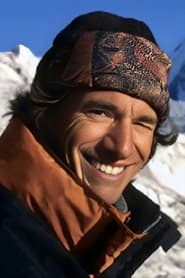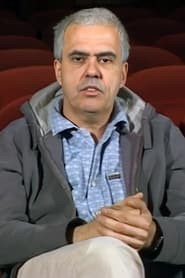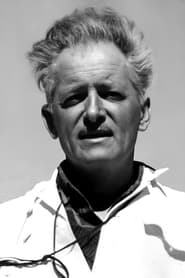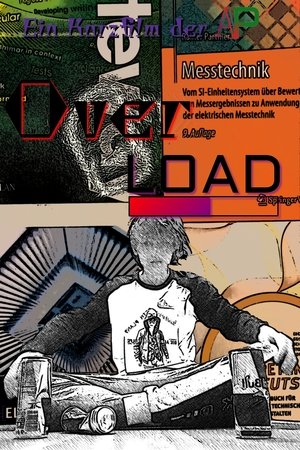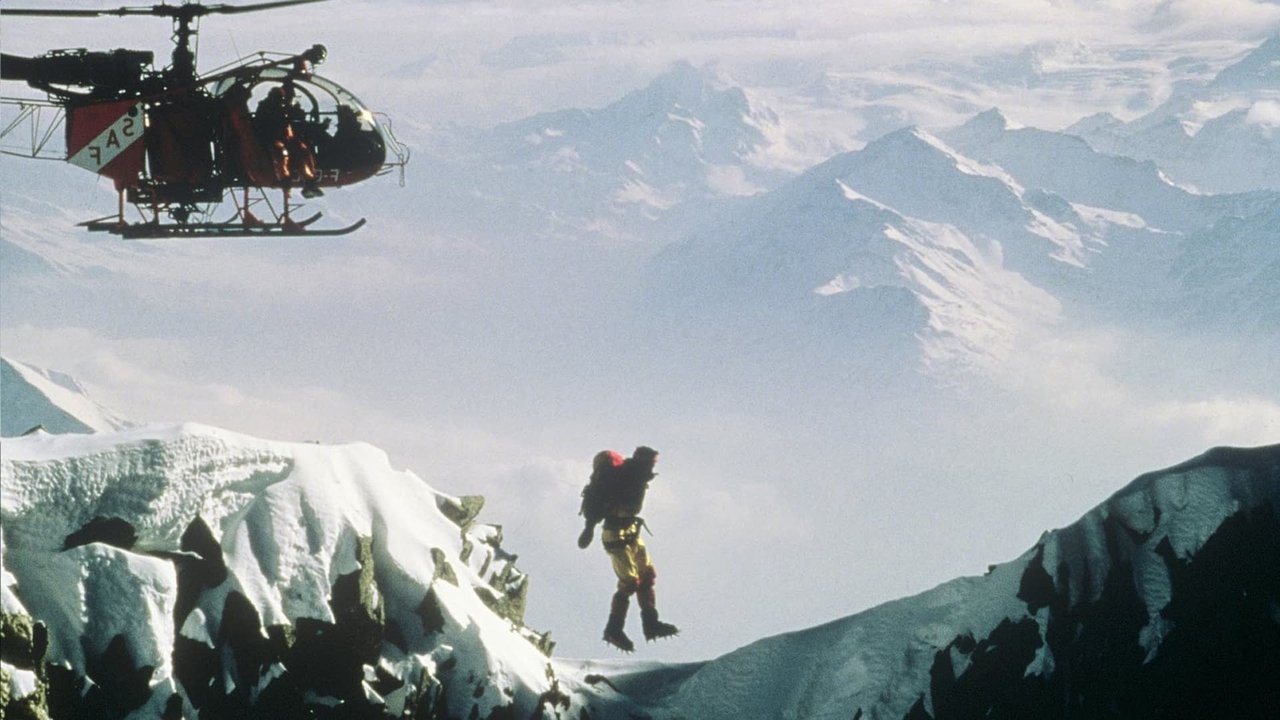
When the Mountaineers Make Their Cinema(2000)
Many mountaineers as part of their activity have used cameras and films to allow us to participate through images in their adventures and their emotions. Many of them have become true film professionals: Joseph Vallot, Lionel Terray, Marcel Ichac, Renè Vernadet, Jean Afanasieff, Pierre Royer, Denis Ducroz, Kurt Diemberg and many others are among the conquerors of the image of the mountain. The film depicts the passion of these men on the highest mountains in the world... behind the lens.

Movie: When the Mountaineers Make Their Cinema
Top 10 Billed Cast
Self
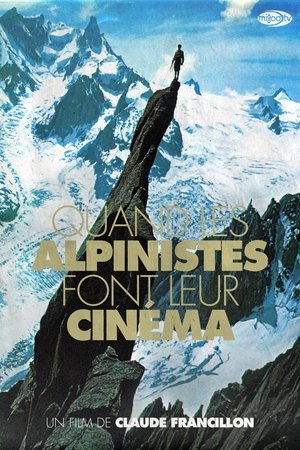
Quand Les Alpinistes Font Leur Cinéma
HomePage
Overview
Many mountaineers as part of their activity have used cameras and films to allow us to participate through images in their adventures and their emotions. Many of them have become true film professionals: Joseph Vallot, Lionel Terray, Marcel Ichac, Renè Vernadet, Jean Afanasieff, Pierre Royer, Denis Ducroz, Kurt Diemberg and many others are among the conquerors of the image of the mountain. The film depicts the passion of these men on the highest mountains in the world... behind the lens.
Release Date
2000-01-01
Average
10
Rating:
5.0 startsTagline
Genres
Languages:
FrançaisKeywords
Recommendations Movies
 8.8
8.8Rest in Pieces(en)
This short machinima horror movie tells the escape story of Chris Edwards, inner voice dubbed by Aaron Landon Jackson, who wakes up in the middle of the night, at the cemetery, by a nameless grave that reads "Rest In Pieces."
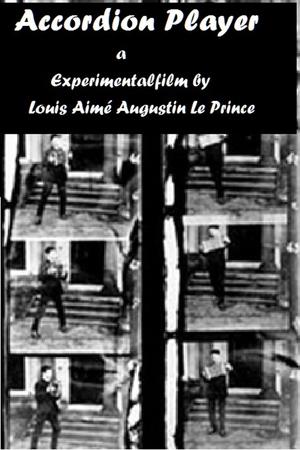 4.8
4.8Accordion Player(xx)
The last remaining film of Le Prince's LPCCP Type-1 MkII single-lens camera is a sequence of frames of his son, Adolphe Le Prince, playing a diatonic button accordion. It was recorded on the steps of the house of Joseph Whitley, Adolphe's grandfather.
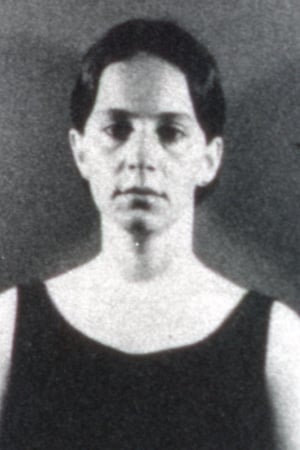 6.8
6.8Matrix(en)
"MATRIX is a flicker film which utilizes 81 still photographs of my wife's head. It is a film dependent upon variation of intense light changes by calculated combinations of black and white frame alternations with exposure changes. Throughout, the light intensity rises and falls as the head rotates in varying directions within a 360 degree frontal area." — James Cagle
 7.0
7.0Spring(ru)
This is a story about a city guy Nikolai, who will have to go instead of his friend on a rural business trip. A series of funny events, meetings and the beauty of the Yakut village encourage Nikolai to make an important decision in his life…
 10.0
10.0We Have Evil Dead at Home(en)
A group of friends spend spring break at a beach Airbnb. They uncover the Weezer CD of the dead unleashing untold horrors onto themselves as demons posses and pick them off one by one.
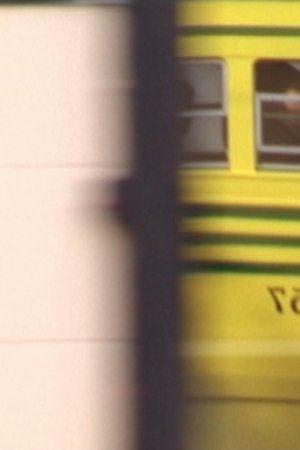 5.7
5.7way(en)
San Francisco filmmaker Konrad Steiner took 12 years to complete a montage cycle set to the late Leslie Scalapino’s most celebrated poem, way—a sprawling book-length odyssey of shardlike urban impressions, fraught with obliquely felt social and sexual tensions. Six stylistically distinctive films for each section of way, using sources ranging from Kodachrome footage of sun-kissed S.F. street scenes to internet clips of the Iraq war to a fragmented Fred Astaire dance number.
 5.1
5.1The Brady Girls Get Married(en)
Made-for-tv movie, the pilot for a "Brady Bunch" revival series, "The Brady Brides." Jan and Marcia have met the men of their dreams and decide to tie the knot. They agree to hold the weddings together in the family's back yard, but fight over whether to have a modern ceremony or a traditional one. Can the marriages be saved? All of the original cast members (except cousin Oliver) put in a return appearance.
 6.2
6.2Red Light District: Gonna Get Out(ja)
It's the evening before the day all brothels must be shut-down, according to the new law, in 1958. At the Kofukuya's (literally, the house that sells happiness), five prostitutes decide to celebrate the day. Eroticism, drama, and comedy mix as each hour a different event passes, in which all the women's stories come to the surface.
 6.0
6.0Vadakkumnadhan(ml)
Iringannoor Bharathan Pisharody, professor at the Sanskrit University, a very knowledgeable man with a keen interest in the Vedas, astrology and Kathakali, author of several critical works and winner of numerous awards, is the central character of Vadakkum Nathan. Meera (Padmapriya) is his student and murapennu. Both families have agreed to their wedding and a date has been fixed. But when the auspicious day dawns and the bride arrives at the mandapam the groom has disappeared. Years pass. No one knows Bharathan's whereabouts.Then one day his mother and younger brother on a pilgrimage to the holy shrines of Haridwar, Kedarnath, Rishikesh and Rudraprayag, meet Bharathan on the foothills of the Himalayas. From there unfolds the touching story of Vadakkum Nathan.
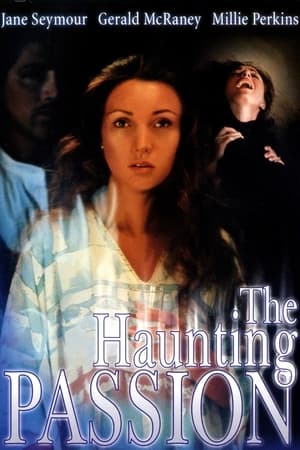 6.0
6.0The Haunting Passion(en)
Dan and Julie Evans are looking for a fresh start after Dan is cut from his pro football team due to age. They move into a palatial, coastal house and Dan starts a new career as a sportscaster, but the loss of his career has stirred up a deep vulnerability and it has spilled over into his sex life with his wife. With no outlet for her desires, Julie begins to fantasize, but it seems alarmingly real. Soon, the fantasy man is haunting her every waking moment and coming between her and Dan, and Julie comes to fear that their home may be haunted.
Victory Quiz(en)
A short film where viewers are given 10 or 15 seconds to answer questions about the United States and its involvement in World War II.
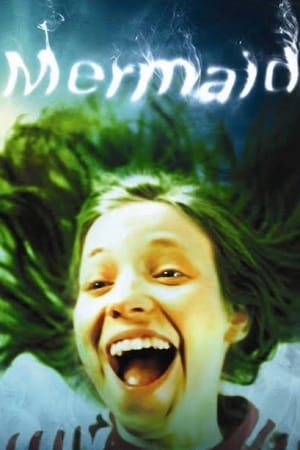 6.5
6.5Mermaid(ru)
The fanciful tale of an introverted little girl who grows up believing she has the power to make wishes come true. She must reconcile this belief with reality when, as a young woman, she journeys to Moscow and grapples with love, modernity and materialism.
Similar Movies
 10.0
10.0Fly High(de)
Twelve talented young mountaineers, five geologists from the University of Lausanne and four mountain guides take an unprecedented risk in Patagonia. Trained by the great climbers Ralf Weber, Ueli Steck, Denis Burdet and David Fasel, the young people are collecting rock samples from the granite walls of the Paine Towers, which are up to 1000 meters high, on behalf of science. The challenges are enormous: Climbing a big wall at the highest level of difficulty, cloudy weather, relentless wind that tears at material and nerves - and an urgency that also pushes the group to their emotional limits. "Flying High" not only documents an extraordinary undertaking, but also shows up close what happens when something happens that can happen after every meter of altitude climbed: a fall.
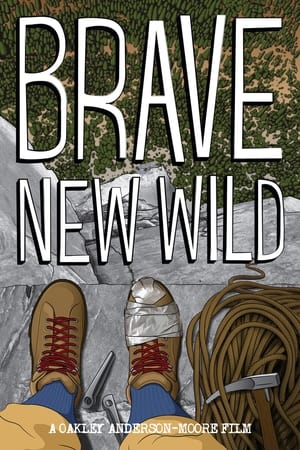 10.0
10.0Brave New Wild(en)
BRAVE NEW WILD is an offbeat chronicle of America’s Golden Age of rock climbing before and after the controversial ascent of the Dawn Wall in 1970. Some forty years later, Oakley Anderson-Moore, the daughter of a pioneering climber, stumbles upon her father's old hi8 tapes, and sets out to answer the question: why climb when there's nothing to gain -- and everything to lose? Wry humor and an eclectic original soundtrack punctuate the delinquent antics of the Vulgarians in the ‘Gunks, the larger-than-life rivalry of Yosemite’s rock gods, and the fruit tramping, freight train hopping hobodom of her dad’s climbing life. This film is quintessential viewing for those who long for adventure.
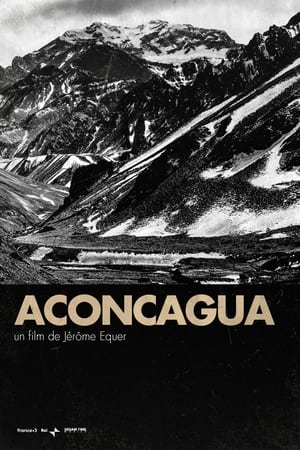 10.0
10.0Aconcagua(fr)
History of the first ascent of Aconcagua by the south face in February 1954 by the French shock team led by René Ferlet and composed of Lucien Bérardini, Adrien Dagory, Edmond Denis, Pierre Lesueur, Robert Paragot and Guy Poulet. In seven days of combat, they extricate themselves from the mountain in a pitiful state; all except Robert Paragot will be victims of severe frostbite which earned them amputations, some important as for “Lulu” Bérardini who lost part of his left hand.
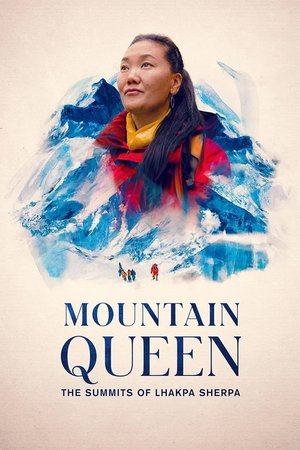 7.4
7.4Mountain Queen: The Summits of Lhakpa Sherpa(en)
A Nepali mountaineer risks everything on a record-breaking Mount Everest climb to secure a brighter future for her daughters.
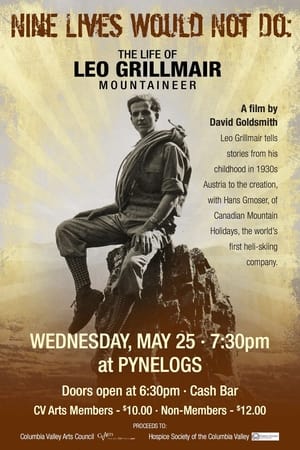 0.0
0.0Nine Lives Would Not Do(en)
One of the Columbia Valley's most accomplished legends, Leo Grillmair. The film tells the stories of his upbringing in Austria during the 1930s, up to the creation, with Hans Gmoser, of the Canadian Mountian Holidays, the world's first heli-skiing company.
 10.0
10.0The Call Of The Peaks(fr)
L'Appel Des Cimes, directed by Alain Pol, is a documentary commissioned by the CAF and the various French ministries on the practice of post-war mountaineering. In 1946, climbers trained at the Fontainebleau Climbing School. Guy Poulet and Jacques Poincenot try to climb the Aiguilles de Chamonix but fail during the climbing phase. After a night in a refuge with Denise Rouzeau and the guide Pierre Allain, the mountaineers make a new attempt. Successful demonstration for those who continued the approach walk then the passage of the seracs of the glacier. On the rock, the roped party crosses a chimney and a crack to reach the summit and abseil down. Led by high mountain scouts, Guy and Jacques rediscover the glaciers and needles of the Mont-Blanc massif during the next lesson.
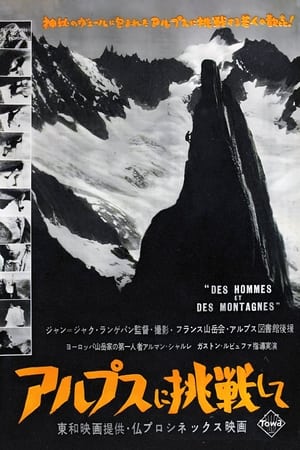 10.0
10.0Des Hommes Et Des Montagnes(fr)
History, advice and demonstrations of mountaineering in the Mont Blanc massif by the renowned guides of the National School of Ski and Mountaineering from Chamonix. The film starts with an historical summary illustrating the aspirations and methods that lead man to conquer the mountains. Armand Charlet teaches mountaineering techniques and takes his students to the field for glacier or rock exercises. Gaston Rebuffat makes demonstrations of particularly dangerous climbs. At altitude, people move in solitude, cold and silence, like circus acrobats without spectators, but nothing stops the modern mountaineer.
 10.0
10.0Jean des Bossons(fr)
Jean des Bossons is a documentary-fiction which recounts the activities of a high mountain guide in 1947. Around Chamonix Mont-Blanc, the guide Jean des Bossons, interpreter by the mountaineer Armand Charlet, accompanies on mountain hikes, Jean-Pierre, an apprentice guide. The novice, skis on the shoulder, is already clumsy. The professional taught him how to travel on skis uphill and downhill, then mountaineering in ice and rock parishes. By dint of training, Jean-Pierre has made it his job. Guides are also lifeguards. A group went to a glacier to rescue a man who had fallen into a crevasse. During this rescue, Jean des Bossons is the victim of an accident. A drama that prevents him from practicing the profession, but not climbing. The man sinks into the fog and Jean-Pierre cannot find him.
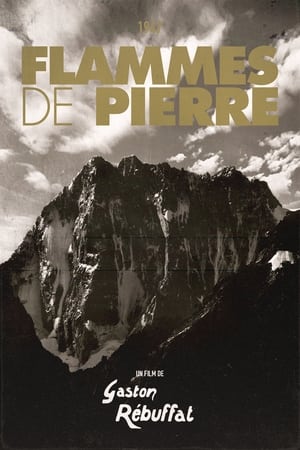 10.0
10.0Flammes De Pierres(fr)
"Flammes de Pierre" is the first documentary made by Gaston Rébuffat himself in 1947. It depicts Rébuffat in full ascent of the Flammes De Pierre, wild ridges in the heart of the Mont Blanc massif overlooking Chamonix. Like Roger Frison-Roche, Walter Bonatti, René Desmaison or Giusto Gervasutti, Gaston Rébuffat has written and filmed the great pages of contemporary mountaineering but above all, he knew how to talk about it with enough poetry so that it is not simply airtight race stories for spectators. Stories that have been triggers for many readers, who have come to know “stone flames” thanks to him.
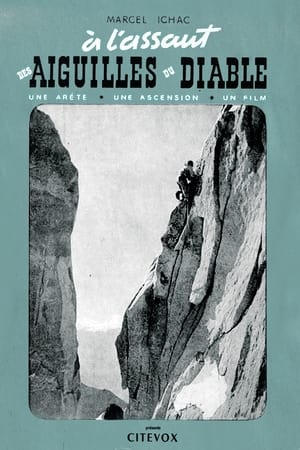 10.0
10.0A l'Assaut Des Aiguilles Du Diable(fr)
Marcel Ichac accompanied the mountaineer Armand Charlet, in 1943, in the repetition of the first crossing of the Aiguilles du Diable that the guide of the Chamonix valley had made in 1925. A roped party joined on snow and ice the Col du Géant, reached at the Mont-Blanc-du-Tacul stop and on the Col du Diable. The men cross the needles by climbing chimneys, cracks and abseiling walls. They access the eastern slope of the Mont-Blanc massif which offers a panorama of the Grandes Jorasses and Mont-Blanc. Armand Charlet was the first to reach the summits of four needles above 4000 meters: the Devil's Horn, Pointe Chaubert, Pointe Médiane and Pointe Carmen; he also tells how he successfully climbed the furthest, the Isolated. Marcel Ichac shot these scenes as close as possible to his subject, he responded with this film with a “truth” cinema, the principle of which we find in his later productions.
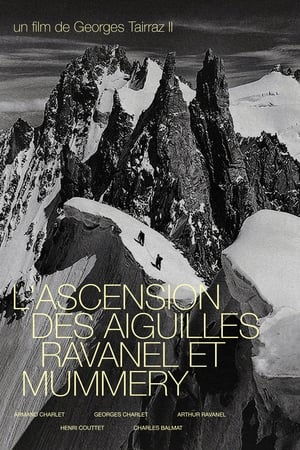 10.0
10.0L'Ascension Des Aiguilles Ravanel Et Mummery(fr)
"The ascent of the Aiguilles Ravanel and Mummery", climbed by young guides in cycling pants: The brothers Armand Charlet and Georges Charlet, Arthur Ravanel, Henri Couttet and Charles Balmat. The film was shot by Georges Tairraz II, Chamoniard mountain photographer, representative of the third generation of a family line of mountain photographers and filmmakers. George Tairraz II's film will lay the groundwork for a French vision of mountain film; In the 1930s, a French school of mountain cinema emerged, less expressionist, more stripped down and realistic than the German school. These are the films of Marcel Ichac, Roger Frison-Roche, Samivel, Georges Tairraz II, etc. It develops according to the principles set by Marcel Ichac, in opposition to the German school. It is both about getting out of the dramatic vision of the mountain and placing the mountain and the climbers at the heart of the plot.
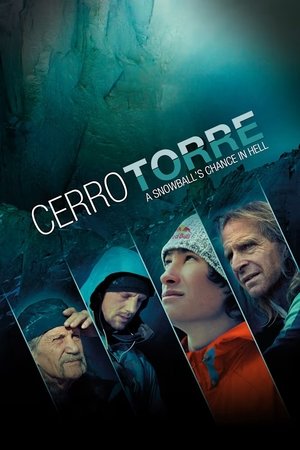 6.8
6.8Cerro Torre: A Snowball's Chance in Hell(en)
Movie about David Lama climbing the Patagonian mountain Cerro Torre for the first time free, a mountain that has been dubbed the most difficult to climb in the world.
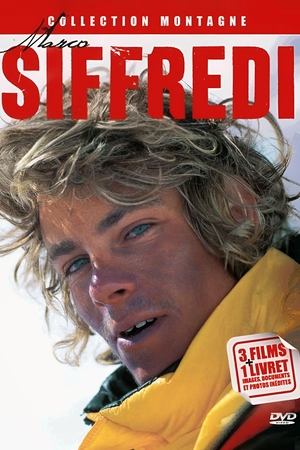 10.0
10.0Marco Étoile Filante(fr)
Avid for steep slopes, Marco Siffredi (1979-2002) obeys only one rule: not to fall. This gifted kid with hair sometimes blond peroxidized, green or blue clashed in his valley: Chamonix, mecca of mountaineering. His thing was to go up and down on a snowboard. . 90 minutes September 8, 2002, altitude 8848 meters, rare oxygen, his head already brushing the sky and his snowboard running, Marco Siffredi, 23, rushes from the summit of Everest in the Horbein corridor and its slopes at 50 degrees . A year earlier, he had already made the first descent of the mountain on a snowboard. But there remains another corridor… more direct. It's not a challenge, just a reason to be... However, that day, at the top of the roof of the world, his trace is lost...
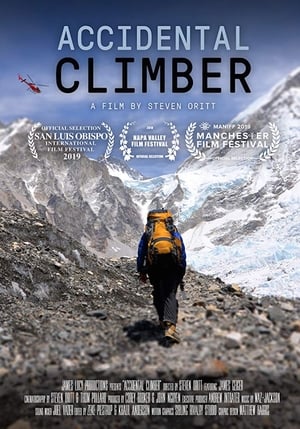 5.0
5.0Accidental Climber(en)
Jim Geiger, a retired forest ranger and amateur mountaineer, attempts to become the oldest American and first great grandfather to summit Mt. Everest, aged 68. His transformation from a weekend hiker to attempting one of the most extreme and physically demanding feats known to man is driven by a desire to prove that age is just a number. What ensued, however, forever changed Jim's life.
National Geographic - Everest, Una Sfida Lunga 50 Anni(it)
In 1953, Sir Edmund Hillary & Tenzing Norgay made history as the first people to reach the top of Everest. Now, 50 years later, three sons of Everest's most celebrated climbers return to the mountain to challenge it again. Join their journey as they brave the elements and face death to climb 29,000 feet of wind-blasted rock and ice. And, relive the dramatic history of Everest from great triumphs to deadly tragedies, enduring rivalries and the unsung role of the Sherpa people—as National Geographic exposes the untold stories that lurk in the mountain's epic shadow and takes you on the ultimate Everest experience.
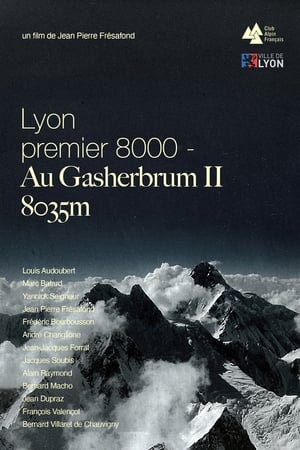 10.0
10.0Lyon Premier 8000, Au Gasherbrum II - 8035m(fr)
The "Lyon Premier 8000-Gasherbrum II 8035m" expedition, organized and led by Jean-Pierre Frésafond in 1975, was sponsored by the Lyon section of the Club Alpin Français and by Louis Pradel, Mayor of Lyon. The film traces the departure from Lyon of Berliet heavy trucks loaded with equipment, daily life in Pakistan, preparation for the expedition and the approach march with the porters, daily life at the base camp and in the camps. altitude of the members of the expedition: L. Audoubert, Marc Batard, F. Bourbousson, A. Chariglione, J. Dupraz, J.J. Forrat, H. and JP. Frésafond, B. Macho, Doctor A. Raymond, Y. Seigneur, J. Soubis, F. Valençot, B. Villaret de Chauvignypuis. Finally On June 18, 1975, Yannick Seigneur and Marc Batard reached the summit by opening a route along the south ridge. Bernard Villaret de Chauvigny, who was killed during the second assault, was the first victim of the Gasherbrum.
 10.0
10.0L'Histoire D'un Homme Hors Norme(fr)
Director Damien Roz was twelve years old when he attended a conference by mountaineer Jean-Marie Choffat who told of his passion for the mountains and his fight against cancer. Shocked, the young boy said to himself that one day he would tell the story of this extraordinary man. 29 years ago Jean-Marie Choffat, a seasoned mountaineer, suffered from liver cancer. It was then announced to his parents that he only had a few months left to live. But Jean-Marie, who had just had a son, promised himself that he would see his son grow up until he was at least 20… His son Marcelin is almost thirty today and Jean Marie is still there. Jean-Marie lived through the golden age of mountaineering with some 1,200 ascents around the world and many firsts... If he remembers an ascent of the north face of the Grandes Jorasses between two chemotherapy sessions, he evokes his strong friendships with Yannick Seigneur, René Desmaison or Gaston Rébuffat...
 7.5
7.5Touching the Void(en)
The true story of Joe Simpson and Simon Yates' disastrous and nearly-fatal mountain climb of 6,344m Siula Grande in the Cordillera Huayhuash in the Peruvian Andes in 1985.
 10.0
10.0Le Regard Tairraz(fr)
For a century and a half, mountain images by their beauty have largely gained from its influence, its frequentation and its development. But they are also a tool in the service of science, fixing the transformation of landscapes, habitats... Over 150 years, the Tairraz dynasty photographed the mountain. Four generations of photographers have magnified the Mont-Blanc massif. From the first photograph taken at the summit of Mont-Blanc in 1861 to the present day, this art is at the origin of many mountaineering vocations and has largely contributed to the tourist development of these formerly ignored valleys. Here is the wonderful story of a dynasty of photographers, the Tairraz, which stretches from 1861 to the dawn of the 2000s.
 10.0
10.0Sur Les Traces De Premier De Cordée(fr)
"Sur Les Traces De Premier De Cordée", a color documentary from 1952 which will be released the same year as the eponymous photo book published by Arthaud, features Roger Frison-Roche and his sidekick Georges Tairraz II on the Aiguille du Grépon (3482 m) in the Aiguilles massif which overlooks the Chamonix valley. Together they co-produce the images of the ascent. The young Pierre Tairraz, who completed his training in Paris, at the school in the rue de Vaugirard (Cinema promotion in 1953), also took part in this very technical aerial filming as assistant to his father Georges Tairraz II and cameraman.

